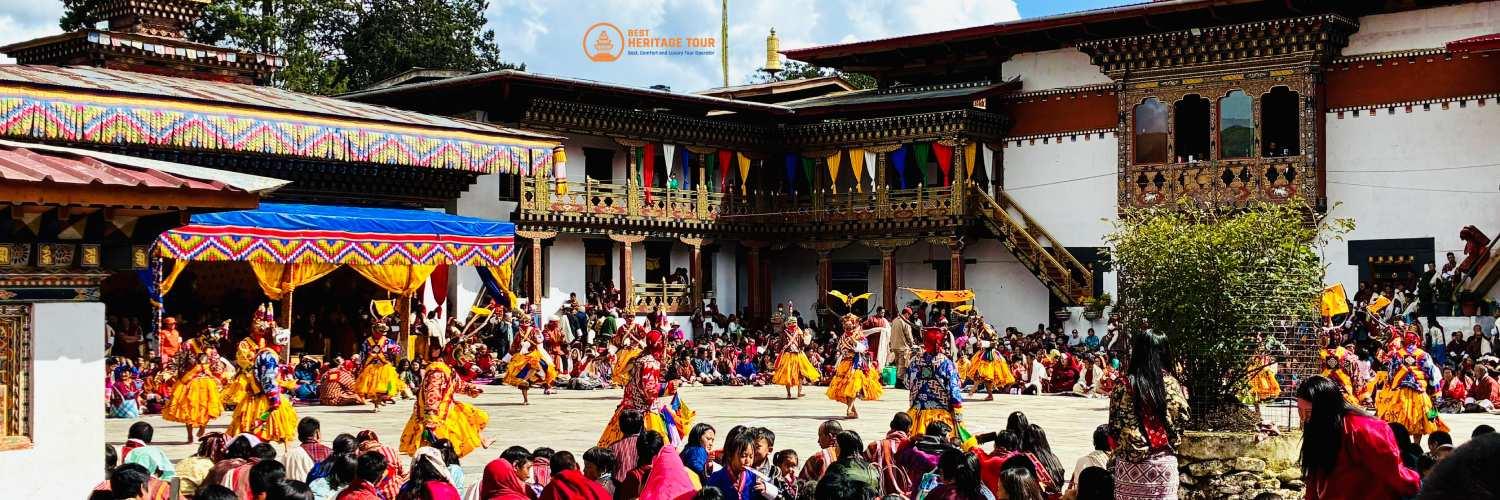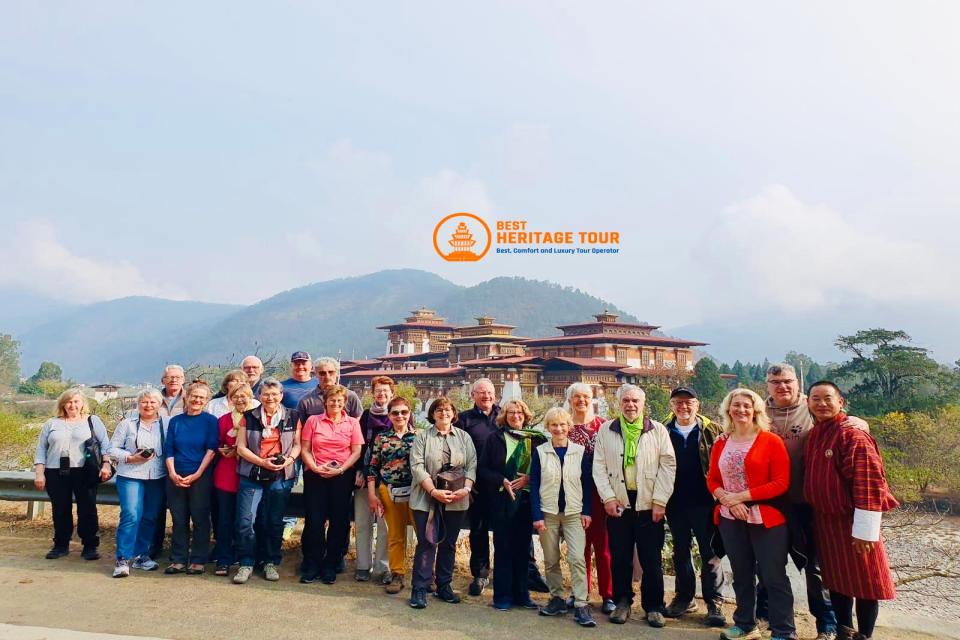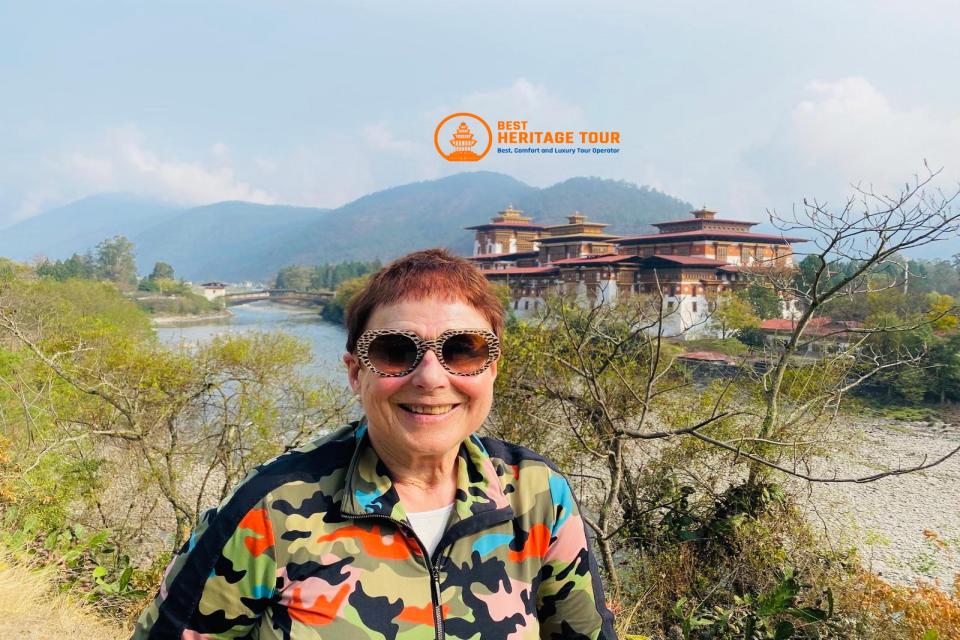Nestled in the eastern Himalayas, Bhutan is a kingdom where nature, tradition, and spirituality coexist in harmony. Known as the “Land of the Thunder Dragon,” Bhutan has preserved its cultural heritage, vibrant festivals, and stunning landscapes, offering travelers a unique Himalayan experience. Planning a Bhutan Cultural Tour in 2026 allows visitors to explore iconic dzongs, monasteries, traditional villages, and festivals while immersing themselves in the local way of life.
This guide, brought to you by Best Heritage Tour, provides everything you need to know for a smooth, enriching, and unforgettable Bhutan cultural journey.
Why Bhutan is the Perfect Cultural Destination
Bhutan stands out for its well-preserved culture, spiritual traditions, and breathtaking natural beauty. Unlike many other Himalayan nations, Bhutan maintains its traditions, from architecture and art to festivals and local customs.
A cultural tour in Bhutan offers:
-
Ancient Monasteries & Dzongs: Explore architectural marvels such as Paro Dzong, Taktshang Monastery (Tiger’s Nest), and Punakha Dzong.
-
Festivals & Tshechus: Witness vibrant masked dances, rituals, and community celebrations that have been passed down for centuries.
-
Living Traditions: Experience traditional weaving, painting, and craftsmanship in rural villages.
-
Scenic Landscapes: Dramatic valleys, terraced fields, and Himalayan backdrops complement cultural experiences.
A year-round cultural tour in 2026 ensures that travelers can enjoy Bhutan’s heritage in every season, whether it’s lush post-monsoon greenery, crisp autumn skies, or serene winter landscapes.
Highlights of a Bhutan Cultural Tour
1. Paro
-
Taktshang Monastery (Tiger’s Nest): Perched dramatically on a cliff, it’s Bhutan’s most famous cultural landmark.
-
Paro Dzong: A striking example of Bhutanese architecture, serving both religious and administrative purposes.
-
National Museum of Bhutan: Houses ancient art, religious artifacts, and cultural exhibits.
-
Paro Valley: Offers scenic views and traditional village experiences.
2. Thimphu
-
Buddha Dordenma Statue: One of the largest seated Buddha statues in the world.
-
Tashichho Dzong: Monastic and administrative center with intricate architecture.
-
Folk Heritage Museum & Textile Museum: Insight into Bhutanese crafts and lifestyles.
-
Weekend Market: A hub for local produce, handicrafts, and souvenirs.
3. Punakha
-
Punakha Dzong: Known as the “Palace of Great Happiness,” it is one of Bhutan’s most iconic dzongs.
-
Chimi Lhakhang: A fertility temple visited by locals and travelers alike.
-
Suspension Bridge Walks: Offering picturesque hikes through river valleys and villages.
4. Phobjikha Valley
-
Home to black-necked cranes in winter.
-
Gangtey Monastery: Spiritual and cultural center of the valley.
-
Ideal for eco-tourism, bird-watching, and exploring rural Bhutanese life.
Festivals in Bhutan
Bhutan’s Tshechus are vibrant festivals celebrating religion, culture, and community. Experiencing a festival adds depth to any cultural tour:
-
Paro Tshechu: Features mask dances and rituals that celebrate Bhutanese spiritual heritage.
-
Thimphu Tshechu: One of Bhutan’s largest festivals with music, dance, and performances.
-
Punakha & Bumthang Festivals: Smaller but culturally rich celebrations showcasing regional traditions.
Travelers in 2026 can plan their tour to coincide with these festivals or enjoy year-round cultural activities in monasteries and villages.
Year-Round Travel Tips for 2026
1. Weather and Seasons
-
Spring (March-May): Ideal for rhododendron blooms and mild temperatures.
-
Summer (June-August): Monsoon season; lush green landscapes but frequent rain.
-
Autumn (September-November): Clear skies and vibrant festivals; peak tourist season.
-
Winter (December-February): Crisp air and fewer tourists; some passes may be chilly but scenic.
2. Accommodation
-
Options range from luxury resorts to traditional guesthouses.
-
Staying in local lodges enhances cultural immersion.
-
Advance booking is recommended during peak seasons.
3. Transportation
-
Flights: Paro International Airport connects Bhutan with India and regional hubs.
-
Roads: Scenic drives between Paro, Thimphu, Punakha, and Phobjikha are part of the cultural experience.
4. Visa & Permits
-
Most international travelers require a visa, arranged via licensed tour operators.
-
Certain monasteries or dzongs may require additional entry permits.
-
Best Heritage Tour handles visa processing, permits, and all travel arrangements.
5. Packing Essentials
-
Comfortable walking shoes
-
Warm clothing for higher elevations
-
Travel adapters and camera equipment
-
Personal medications and toiletries
Cultural Etiquette in Bhutan
-
Dress Code: Wearing traditional attire (gho for men, kira for women) is encouraged in religious sites.
-
Temple Etiquette: Remove shoes, dress modestly, and follow local customs.
-
Photography: Always ask permission before photographing locals.
-
Cuisine: Must-try dishes include ema datshi, red rice, and momo dumplings.
-
Sustainable Travel: Minimize waste, respect the environment, and support local communities.
Conclusion: Plan Your Bhutan Cultural Tour in 2026
A Bhutan Cultural Tour in 2026 offers an unparalleled Himalayan experience, combining rich heritage, scenic landscapes, and immersive local interactions. From majestic monasteries to colorful festivals and serene valleys, Bhutan promises a journey that nourishes the mind, body, and soul.
For tailor-made Bhutan tour packages, visa processing, permits, and expert guidance, contact Best Heritage Tour, your trusted travel partner:
Contact Best Heritage Tour:
Phone / WhatsApp / Viber: +977-9851149197 / +977-9810043046
Email: info@bestheritagetour.com / bestheritagetour@gmail.com
Website: www.bestheritagetour.com
Office: Thamel Marg, Kathmandu, Nepal
Embark on your Bhutan Cultural Tour in 2026 and experience the timeless beauty, traditions, and hospitality of this Himalayan kingdom.
Author: Best Heritage Tour
Date: 13th November, 2025




